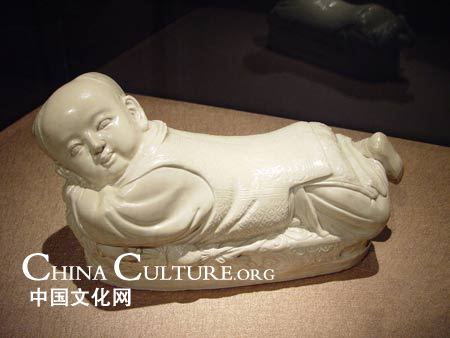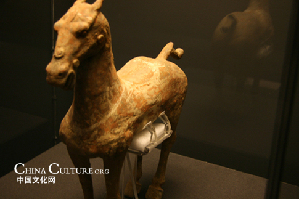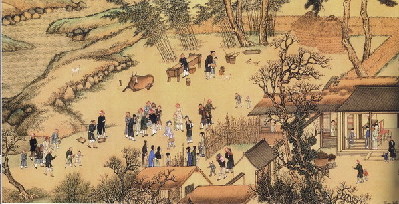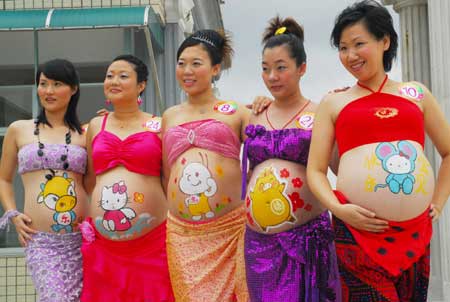| Home > Living in China > Art |
chinese folk art festivals
Harbin Folk Customs and Art Fair
This grand folk art activity, started in June 1999, displays the folk customs of Northeast China. On display are root carvings, stone sculptures, woodcuts, inscriptions, paper-cuts, pictures, bronze wares, patchwork, and straw and willow handicrafts. The Fourth Harbin Folk Customs and Art Fair will be held from June 15 to 21, 2002.
Taishan Temple Fair
The Taishan Temple Fair mixes religious activities with commerce and trade. The temple fair, which originated in the Tang Dynasty, was discontinued in the early 20th century. It has been revived in recent years, and is usually held in March or April.
 |
|
The Mount Paoma Festival |
The Mount Paoma International Festival
Mount Paoma in the Kangding Autonomous Prefecture of Sichuan Province is famous both at home and abroad for the Kangding Love Song (the only Chinese song recommended by UNESCO). At the annual Meeting for Strolling on the Mountain, Tibetans happily gather at the Pure White Lama Pagoda, perform the Sgor-bro dance (a Tibetan folk dance), watch Tibetan operas, racehorses, and demonstrate and compete in martial arts.
 |
|
Making folk handicrafts |
Xuzhou Cloud and Dragon Hill Temple Fair
The Cloud and Dragon Hill Temple Fair is noted for its folk art performances, such as lion dances and stilt wailing, and snacks with local flavors.
Starting during the reign period of Emperor Kangxi of the Qing Dynasty, the Cloud and Dragon Hill Temple Fair is one of the most influencial folk activities in Xuzhou and its Huaihai economic zone. The fair is held on the 19th day of the second lunar month every year. Handicrafts for sale include paper-cuts, dough figurines, wooden and clay toys, and cloth art works.
 |
|
The Lusheng Festival of the Miaos Ethnics |
The Lusheng Festival of the Miaos
Scattered in Guizhou, Hunan, Yunnan and Sichuan provinces, and the Guangxi Zhuang Autonomous Region, the Miao people form larger compact communities in the southeast part of Guizhou and the juncture areas of Hunan, Hubei, Sichuan and Guizhou provinces (mainly in western Hunan). The Lusheng Festival is a traditional festival of the Miaos. It is celebrated in many parts of southwestern China, but falls on different times. The Kaili International Lusheng Art Festival held in Guizhou on August 18 every Year is particularly well known. The major activities are singing in antiphonal style, bullfighting and dancing to the strains of the lusheng, a wind instrument popular among the Miaos.
 |
|
Qintong's Boat Gathering Festival |
Qintong's Boat Gathering Festival
Qitong Town, near Jiangyan City in Jiangsu Province, is located in an area criss-crossed by waterways. At every Pure Brightness Festival, people row boats from the surrounding counties and towns to the Qinhu River to hold the Boat Gathering Festival. There, they take part in competitions and performances. The scene is magnificent, the competitions are breathtaking, performances are attractive and Qintong gathers a large number of boats.
 |
|
Street Fair of the Bai People in the third lunar month |
Street Fair of the Bai Ethnic Group
The Street Fair of the Bai ethnic group is held from the 15th day to the 21st day of the third lunar month every year in the Bai Autonomous Prefecture of Dali in Yunnan Province, at the eastern foot of the Midway Harmony Peak of Mount Xicang, near the ancient city of Dali. People come to worship the Goddess of Mercy, who was said to have subdued a demon that was terrorizing the Bai people during the Tang Dynasty. The Fair has now developed into a trade market. Sports competitions are held as well. It is noted as a gathering for economic and cultural exchanges, attracting over one million people every year.
 |
|
"The 3rd of the 3rd Lunar Month" Folk Art Festival of the Lis and Miaos |
"The 3rd of the 3rd Lunar Month" Folk Art Festival of the Lis and Miaos
"The 3rd of the 3rd lunar month" is a traditional festival in which young Li people seek love and happiness. The Miaos of Hainan Province also celebrate this festival. On the 3rd day of the 3rd lunar month, this folk art festival is held annually in Tongshi City, Sanya City and Baoting Li and Miao Autonomous County. It includes a bonfire evening, float parade, festive lantern display, ethnic songs and dance performance, and ethnic costume and handicrafts show.
 |
|
The Torch Festival |
The Torch Festival
Held around the 24th of the 6th lunar month, the Torch Festival is a traditional festival of the Yi and Bai peoples of southwestern China. The Yis live in compact communities in Sichuan, Yunnan, Guizhou and Guangxi. Of these communities, the Liangshan Yi Autonomous Prefecture in Sichuan is the largest. During the festival, torches are erected in front of every household, and a pile of faggots of several meters high is erected in the center of a square. When night falls, and gongs and horns are sounded, people of all ages come forward to ignite the faggot pile. Cheerful flames leap up to the sky, crackling and spluttering. Shouts of joy together with the sound of the gongs and drums make a sea of rejoicing. Then the torch parade begins. People carry torches and walk around their houses and fields, like so many flying fiery dragons. Young people chase and sport about, filling the countryside with gladness and laughter. Other activities include scattering torches, lighting fire arches and fireworks, painting faces, and bull fighting.
 |
|
The Water-sprinkling Festival |
The Water-sprinkling Festival of the Dais
The Dais are mainly distributed in Dehong and Xishuangbanna, Yunnan Province. The Water-sprinkling Festival, the New Year by the Dai calendar, held in the last ten days of the 6th month or early in the 7th month of the Dai calendar (April), usually lasts three to five days. The first day of the festival is the day for seeing off the old and welcoming the new. On this day, the Dai people dip flowering branches in water and sprinkle the water on one another for blessing. The second day is devoted to splashing water on everyone, as a symbol of good luck and happiness; the more water one is splashed with, the happier one will be. On the third day are held the "dropping the pouch" game and the "ascending high" competition. During the festival, the Dai people also hold boat races, dance the peacock dance and conduct the Ganbai game.
The Sparkler Festival of the Dongs
The Dongs inhabit the junction area of Guizhou, Hunan and Guangxi. The Sparkler Festival usually falls on the 3rd day of the 3rd lunar month. Scrambling for an iron ring is a major game during the festival, in which the players are divided into two teams. When the iron ring falls to the ground, the players scramble for it. After one team gets possession of the ring, they dash to the goal with it, while the other team tries to block them.
Art
 more
moreClassic Chinese Handicraft:
Porcelain pillows, as classic Chinese handicraft,

Chinese Treasures Returned from
As witness of Chinese culture and custom, countless treasures

The lost legacy: classical music
Accompany by the long history of China, Chinese classical music

Customs
 more
moreChinese Kungfu
Kungfu Taste: Learn Martial Art in Shaolin Temple
The mention of Shaolin Temple conjures up images of a quiet and
Keet Kune Do will reappears on screen: BRUCE Lee and
The Legend of Bruce Lee is shot by China Central Television
The Road to the Olympic Games for Wushu
Wushu, also called kungfu, martial arts, is attracting more and more




 print
print  email
email  Favorite
Favorite  Transtlate
Transtlate 
